PS-40
In late '30s, Soviets needed of a fast transport plane, able to carry urgent loads, mail, newspapers or some important passenger in less time than their slow civilian planes, as K-7, already in service. This was needed also in consideration of the wide distances involved in flights in Soviet territory.
The first adaptation of SB-2-M100A to this role was the PS-40, where PS was for Pochioviy Samolyot, mail carrying plane. It entered service in August 1938, on the Moskow-Vladivostok and the Moscow-Tiflis (now Tbilisi)-Baku routes.
Each plane had provision for six passengers seats, and amaximum takeoff weight of 6400 kg, a cruising speed of 341 km/h at 3800 m.
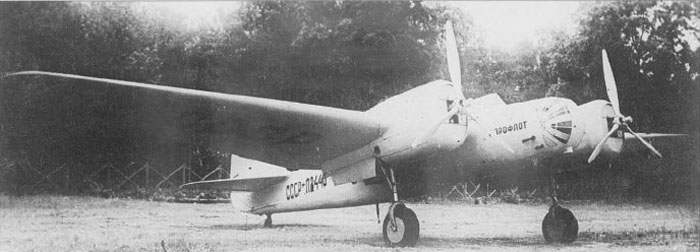
PS-40 differed from the SB-2-M100A for:
- deletion of all armament, but the cartridge case ejector tunnel under the nose was retained;
- the central nose glazing was replaced by a two-bieces folding door, hinged on its upper side; one cargo compartment was established into the nose;
- the rear ventral gun hatch was covered; a further cargo compartment was established in the former rear gunner cockpit;
- the bomb racks were removed; a further cargo compartment was installed in the former bomb bay.
Image from Tupolev SB of M.Maslov, ed. Icarus
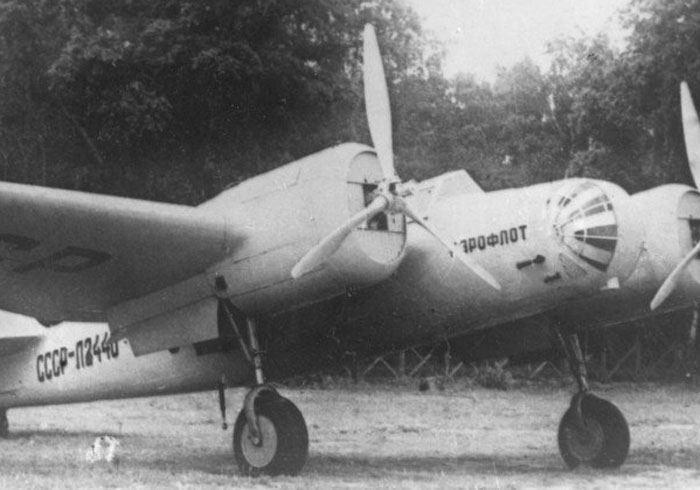
Left: a closeup image of PS-40 under test at NII VVS (Scientific Institute of the Air Force).
Plane SSSR-L2440 was assigned to Aeroflot, as readable on the fuselage.
The overall finish looks light grey with black inscriptions; note the absence of spinners, usually installed on PS-40s.
The glazing of the nose sides was still trasparent; some thin metallic plates are mounted inside, preventing the load to hit the panels.
45 PS-40 were delivered to Aeroflot up to December 1939.
Some planes were assigned to a special Liaison Air Grou at Myachkovo, near Moscow, ater the outbreak of the GPW.
Below: profile of plane SSSR-L2440
Image from Tupolev SB of M.Maslov, ed. Icarus
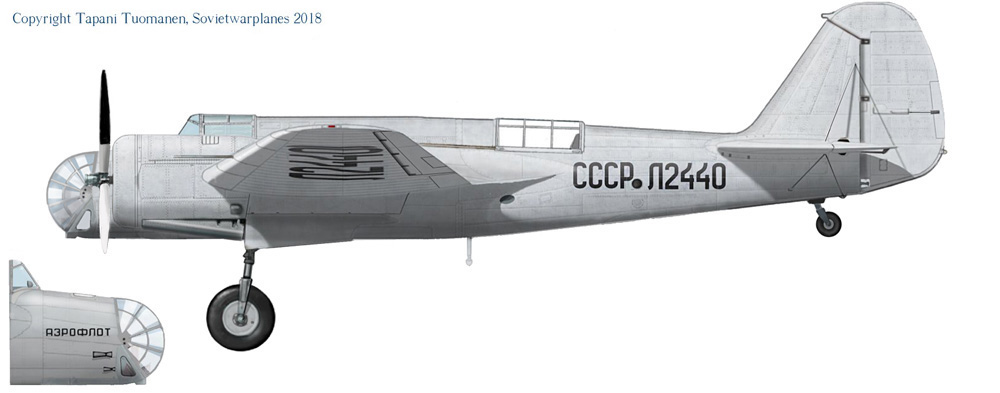
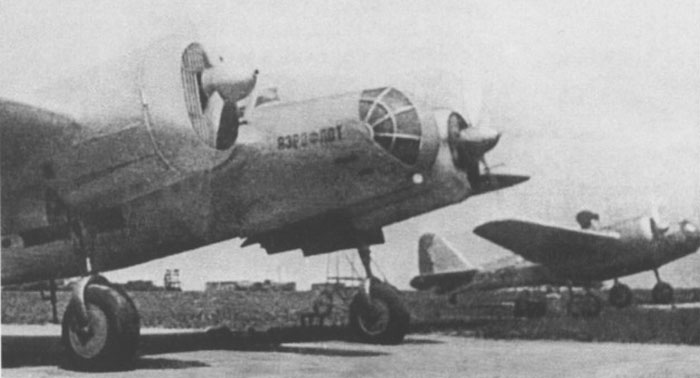
Left: two PS-40 of Aeroflot.
These planes have standard spinners.
A prominent characteristic is the darkening of nose side windows from inside, unclear if with a layer of dark paint or, more likely, a tissue cover.
The planes of Aeroflot were adsorbed into the Grazhdanskii Vosdushniy Flot (GVF, Civil Air Fleet) just after the war outbreak; they were destined to transport mail , matrices of newspapers, documents, personalities between the front and the rear. Besides they connected the capital with the new industrial areas beyond the Urals, and contributed to refuel the besieged city of Leningrad flying low on the Ladoga Lake.
Image from Tupolev SB of M.Maslov, ed. Icarus
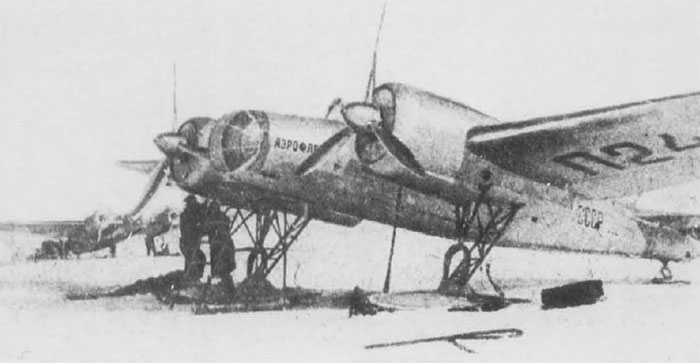
Left: PS-41 of Aeroflot with fixed ski gear. The landing gear doors are replaced with a metal fairing with holes for the struts, just as on the corresponding military version. The code L-24xx on the fuselage is not visible, probably for a defect of the photo.
The overall finish seems aluminum paint, just as the military version.
Image from Tupolev SB of M.Maslov, ed. Icarus
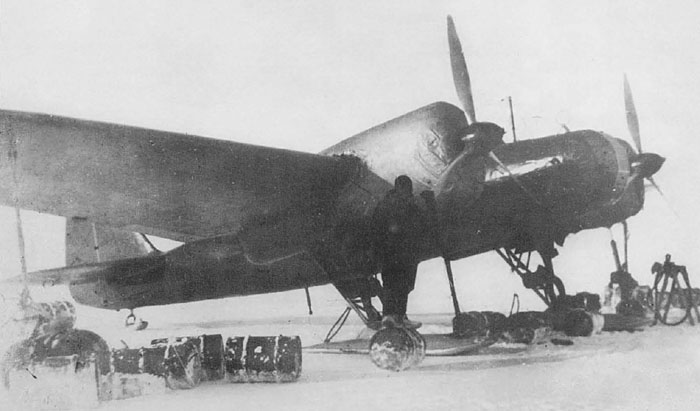
Left: PS-40 equipped with fixed ski gear, radio mast and radio compass ring aerial over the nose, as characteristic of planes utilized on Northern areas. It is likely that this plane was of Aviaarktika, but the photos doesn't show codes or particular liveries, only an apparently solid dark gloss finish. Usually planes of Aviaarktika bore an orange-blue livery and codes starting with H (cyrillic N)
Image from Tupolev SB of M.Maslov, ed. Icarus
PS-41
the PS-41 was the civilian version of SB-2-M103 with pointed cowlings. Deliveries started in 1940 and 49 were delivered up to December 1940.
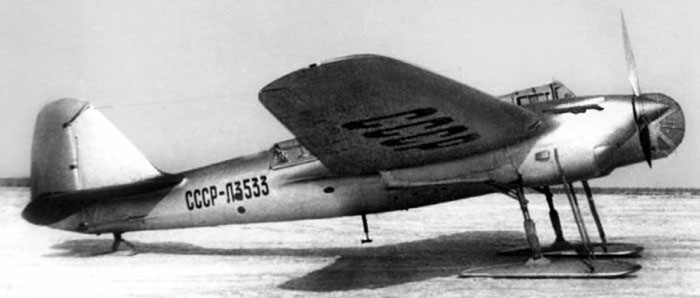
Left: PS-41 with M-103 engines and early type cooler intake with adjustable shutter, equipped with semiretractable skis (the doors were removed and replaced by lips to close the gaps between the nacelle and the skis in raised position). The livery looks painted aluminum, just as the very early planes of the military version, built in late 1939.
The ventral aerial has an unusual device at its lowere end, apparently a Venturi tube.
The cyrillic character shown before the number (cyrillic L) was both for Aeroflot and for Grazhdanskii Vosdushniy Flot (GVF, Civil Air Fleet).
Usually these planes had the glasses of the nose obscured; it is not clear if it was an internal cover or an internal layer of paint.
Image from Tupolev SB in action- Squadron Signal publications


Left: PS-41 of the GFV.
The image of the loading procedure is interesting; it shows also the front two-piece folding door opened; the panelsare visible over the nose.
Contrary to previous photos, here the internal cover of the windows on the nose sides is light.
The code, partially visible here and on another photo, could be SSSR-L3551.
Image from Tupolev SB in action- Squadron Signal publications
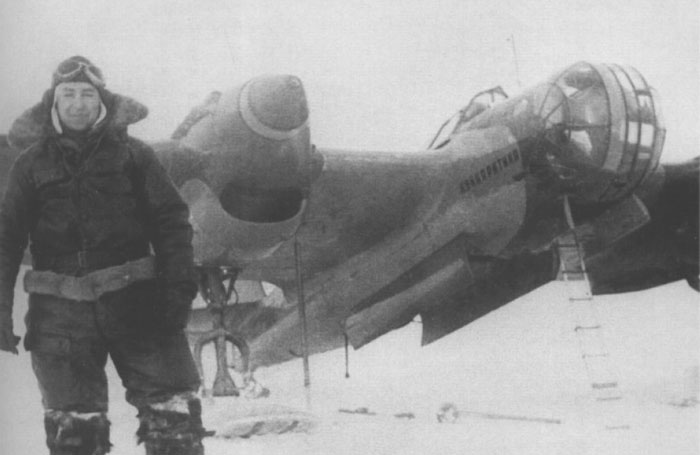
Some PS-41 were assigned to Aviaartika, that operated in the Arctic areas of the Soviet Union; those planes were equipped with skis.
Planes of Aviaartika were usually painted glossy bright orange overall, with blue areas on the noses, cowlings and sometimes leading edges of the wings and tails.
Left: photo of a PS-41 of Aviaarktika. The intakers of the radiators were of the of the fixed intake type.
Note that the plane has still the front glazing, suggesting that the plane was a former bomber passed to the transport role. It is likely that the nose housed a navigator dor flight with low visibility.
Image from Tupolev SB in action- Squadron Signal publications
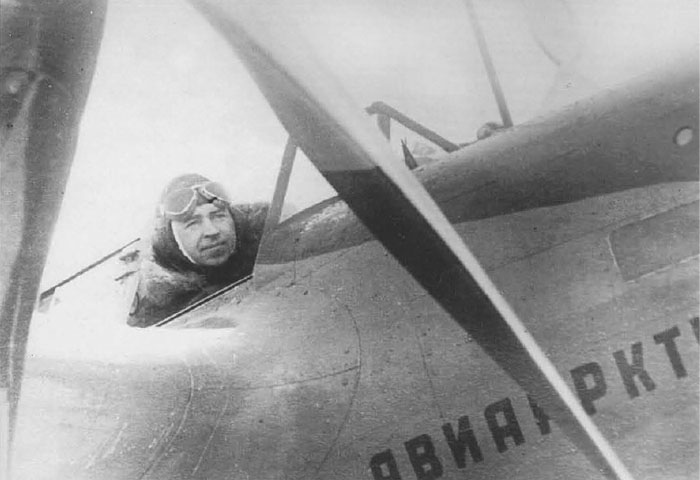
Left:
another photo, probably of the same plane. Note the mast of the radio and the radio compass loop aerial over the nose.
The windshield seems the late type divided into three parts; so, the engines could be M-104 or M-105.
Here we see that the prop blades were painted aluminum, with the rear part partially painted black as prewar military standard.
Below: a reconstruction of the look of this (or similar) plane. The parts not visible in photos were drawn according to other planes of Aviaartika. The code of planes of Aviaarktika started with H (cyrillic N).
Image from Tupolev SB of M.Maslov, ed. Icarus
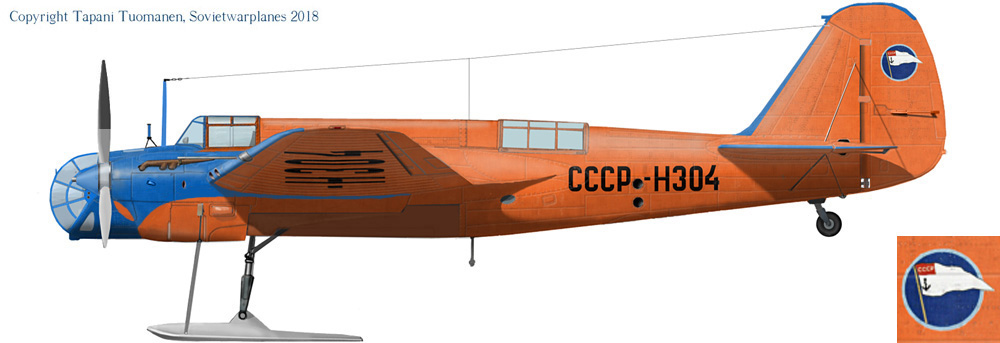
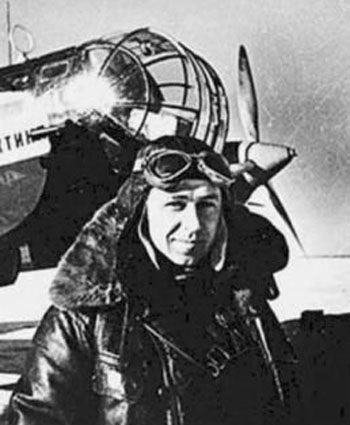
Left: another photo of PS-41 of Aviaartika. As the previous one, this one has a glazed nose for a navigator and radio compass aerial over the nose.
The logo 'Aviaarktika' is inscribed in a white rectangle, and the spinners look aluminum.
Image from Tupolev SB of M.Maslov, ed. Icarus